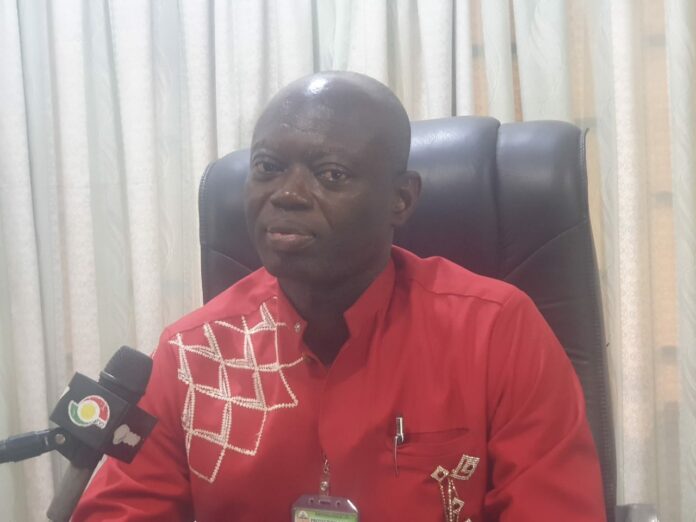The Environmental Protection Agency (EPA) has installed six (6) sensors in some communities in the Greater Kumasi Metropolitan Area of the Ashanti region to monitor air quality and generate real time data to inform policy decisions.
The move forms part of initiatives being devised by the EPA to improve air quality in the Greater Kumasi Metropolis.
Air quality sensors are devices used to detect contaminants in the air, such as particulates, pollutants and noxious gases that may be harmful to human health.
Preliminary data from the Clean Air Fund-funded initiative is already showing some pollution trends and helping to identify pollution hotspots in Kumasi.
READ ALSO: Twifo Praso: Residents lament pollution of Ɛntafrewaso stream by liquid waste from hospital
The six sensors were installed at Santasi Roundabout, Sepe Dote, Adum, Asokwa, Kaase and Suame Magazine.
The Ashanti Regional Director of the EPA, Samuel Oteng, has been telling Akoma News every city needs to have air quality sensors within 5 to 10 mile radius. He said the EPA has a number of sensors in Kumasi but are not enough to provide adequate data for the city.
A network of low-cost sensors spread across the city would aid in closing the data gaps that exist.
“Beyond having sensors to collect data, the capacity of technocrats needs to be built to understand and interpret the data and make use of it. When the air quality data is aligned to economic and health impact, and used as basis to build awareness among the public, we would be making good progress,” he said.
“For now, we are developing a sense of what is happening in Kumasi but we need more localised data to engage with policy makers on next steps,” he added.
Mr Oteng explained that as cities grew, they struggled with issues of poor air quality and that, Kumasi, one of Africa’s fastest growing cities, and one of the fastest growing economies, was an example.
He said fumes from overaged and poorly maintained vehicles, emissions from industries, indiscriminate burning of refuse, deforestation, wood fuel used for cooking, and shrinking green spaces were some of the major causes of air pollution.
The Ashanti region EPA boss also indicated that without a rethink of a development paradigm, which placed health and environmental prudence at its centre, growing cities inhabitants’ health, well-being and socio-economic prospects would worsen and will in turn hamper economic growth and prosperity.
READ ALSO: Anas reminds Ken Agyapong not to forget his defamation suit ongoing in the US
“We have well crafted environmental laws and structures for delivery, but there is a huge gap in enforcement. This has occasioned some of these problems. The law must work,” Mr. Oteng said adding that, “there are things we can easily begin to do to reduce pollution and reestablish the country’s leadership in the sub-region for environmental stewardship.”
He said Ghana had comprehensive activities on adaptation and mitigation under the nationally determined contributions for climate change and that there was the need to prioritise those that could generate snowball effect on air quality and health.
By Benjamin Aidoo|AkomaFM|Onuaonline.com







